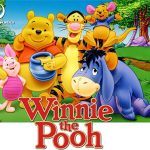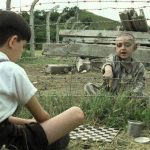The Hobbit: The Battle of the Five Armies (2014)

Released in 2014, The Hobbit: The Battle of the Five Armies is the climactic finale to Peter Jackson’s adaptation of J.R.R. Tolkien’s classic novel, The Hobbit. Following the journey of Bilbo Baggins, the film serves as the third installment in a trilogy that began with An Unexpected Journey (2012) and continued with The Desolation of Smaug (2013). This film not only wraps up Bilbo’s adventure but also sets the stage for the larger conflict explored in The Lord of the Rings trilogy.
Plot Overview
Set in Middle-earth, The Battle of the Five Armies picks up directly after the events of The Desolation of Smaug, where the dragon Smaug has been unleashed upon the people of Lake-town. The film follows Bilbo Baggins (Martin Freeman) and the band of dwarves led by Thorin Oakenshield (Richard Armitage) as they contend with the consequences of their actions in the previous film. As they seek to reclaim their homeland, the Kingdom of Erebor, they find themselves at the center of a brewing conflict.
The narrative intensifies as various factions converge on Erebor, including elves, men, and dwarves, each vying for their share of the treasure hoard guarded by the dragon. The title refers to the ensuing battle between these five armies: the Dwarves, the Elves, the Men, the Orcs, and the Eagles. Amidst the chaos, Bilbo grapples with his conscience, loyalty, and the true cost of greed, setting the stage for his ultimate growth as a character.
Key Themes

- Courage and Sacrifice: The film explores themes of bravery and the willingness to sacrifice for the greater good. Characters like Thorin and Bilbo face moral dilemmas that test their courage and principles.
- Friendship and Loyalty: The bonds forged among the characters are put to the test, showcasing the importance of camaraderie in times of crisis. Bilbo’s unwavering loyalty to his friends highlights the value of trust and solidarity.
- Greed and its Consequences: The insatiable desire for wealth leads to conflict and destruction. The characters’ struggles with greed serve as a cautionary tale about the dangers of materialism and ambition.
Visual Spectacle
As with the previous films in the trilogy, The Battle of the Five Armies is renowned for its stunning visuals and epic battle sequences. The film employs cutting-edge CGI technology to bring the vast landscapes of Middle-earth to life and to create thrilling action scenes. The climactic battle is a masterclass in choreography, combining practical effects with digital artistry to immerse the audience in the conflict.
Critical Reception
The film received a mixed-to-positive reception from critics and audiences alike. Many praised its grand scale and visual effects, while some noted that it felt somewhat disconnected from the charm and simplicity of the original book. However, fans of the series appreciated the conclusion of Bilbo’s journey and the connections made to The Lord of the Rings.
Conclusion
The Hobbit: The Battle of the Five Armies serves as a powerful conclusion to a beloved saga that has captured the hearts of audiences around the world. It not only brings closure to Bilbo Baggins’ adventure but also expands upon the rich lore of Middle-earth, setting the stage for future generations to explore Tolkien’s timeless stories. Whether you are a die-hard fan of the franchise or new to the world of Middle-earth, this film offers an unforgettable cinematic experience filled with action, emotion, and the enduring power of friendship.
Suggested videos for you:











